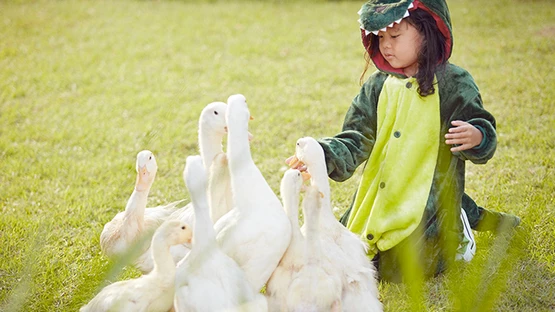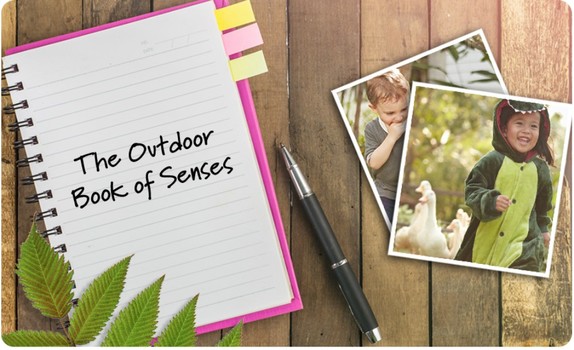Don't Be A Perfect Mum, Be A Peaceful Mum
Life can get overwhelming and the key is taking control of your time a.... read more

Sensory play is an essential part of early childhood development. By engaging a child’s five senses with sensory activities that are suitable for their age, you can foster a learning environment that stimulates their cognitive, motor and social skills to help them achieve all the necessary developmental milestones. Let's delve into the world of sensory play and discover how it can nurture your preschooler child's growth and development.
Sensory play refers to activities that stimulate a child's five senses in a safe and engaging way. A child’s senses mature over time starting from the moment of birth to their preschool years, and every experience with the world around them helps them to build nerve connections that help their brain develop further.1 By engaging their sense of touch, sight, smell, hearing and taste, children can explore and understand the world around them better.
Sensory play is crucial for a child's overall development. It helps them to:2,3
Before creating your own sensory play activities for your child, it’s important to ensure that the activities and items used are age-appropriate and non-toxic.3 If any of the activities require the use of sharp objects such as sharpened colour pencils or even cutting tools, we highly recommend that a parent or guardian supervise them throughout the activity.3
Sensory play activities can be relatively inexpensive. In fact, you can even DIY most of the tools you will need from household items or use whatever you have at hand to create them. Here are some indoor and outdoor sensory activities that are perfect for preschoolers:
Indoor sensory play activities are perfect for days when the weather simply won’t cooperate or for when you simply want to spice up playtimes at home for your child.
Sensory bins offer a world of tactile experiences for young children.3 Fill a container with rice, beans or pasta for a mix of different textures. You can also add items like small toys, fabrics or ice cubes to create a multi-sensory experience and have your child go “digging” for the items so they can learn to identify them based on touch. Encourage exploration with hands, fingers and even feet to maximise the experience.
Stimulate your child's visual skills with colourful activities that engage their attention. Arts and crafts are the perfect way to do this. Tap into your child’s DIY skills and creativity as craft vibrant collages or murals using construction paper cut into different shapes. Play colour-matching games, help them sort objects by colour to teach them colour grouping, or embark on a colour treasure hunt around the house together. Encourage them to describe what they see and use descriptive language throughout the process to stimulate their language skills a well.
Introduce your child to a world of sounds through music and auditory play. Make homemade instruments using everyday objects like pots, pans, spoons, water-filled glasses and even rubber bands stretched across empty boxes. Encourage them to experiment with different sounds and rhythms. Alternatively, you can also read stories with sound effects or play audiobooks, videos and music to help develop their listening and comprehension skills.4
Your sense of taste and smell are very closely related – which is why food tastes bland when you have a cold! So why not combine these two senses into one delicious activity for your child instead? You can do this by creating a snack board of differently textured fruits, vegetables and child-friendly snacks (yoghurt, cooked pasta, jelly) and having them identify each flavour and food item by smell or taste. Plus, it makes for a fun indoor picnic experience that your child will surely enjoy. Spread a mat out on the floor, bring out the snack board and perhaps you can even play a game of masak masak (imaginary play cooking) with your child while you’re at it.
Nature's classroom is the best playground for young minds. From sharpening senses to fostering social skills, outdoor experiences are an invaluable part of childhood.5 Plus, your child will get to engage in physical activities along the way while simultaneously getting a much-needed dose of Vitamin D!6
It can be a bit of a challenge to get your preschooler to focus on the sensory play activity at hand when there is plenty to see and do outdoors, so why not try giving them a mission to complete in the form of an outdoor book of senses instead? Not only does it help them focus on the activity and give them a sense of accomplishment, it will also provide them with a record of a fun activity with mum and dad that they can look back on in the future.

To create an outdoor book of senses for your child, first divide an empty notebook into 5 sections – one for each sense – and create your own nature logbook. Play the “I spy” game outdoors and let your child record his observations in the different sections of the logbook as he explores all 5 senses. Uncertain about how to prompt your child throughout the game? Fret not as we have prepared a brief guideline of ideas for you to try.

Walk around your nearest park and get your child to guess an item that you see. For example, you say “I spy with my little eye, something that’s red and has wheels!” and patiently guide your child as they identify the things around them.

Take a deep breath at the park or beach. What do you smell? Using the same idea, get your child to guess what you’re smelling. Is it the salty scent of seawater or the fresh smell of cut grass?

Take your child out for a walk around the neighbourhood and pick out interesting sounds. Prompt your child to listen out for the melody of chirping birds, honking cars or the breeze.

Plan a picnic by the playground. Mix in some sour fruit like oranges or strawberries and salty cheese, and let your child identify the foods while being blindfolded.

Take a walk in a nearby park or even in your own garden. Blindfold your child, then guide them around the area as you let them feel the different textures of tree bark, leaves and flowers.
Now that you've discovered the magic of sensory play, it's time to embark on this exciting journey with your child. Remember, learning is a fun adventure, so let your child's curiosity be your guide. Don't rush through activities; allow them to explore at their own pace. For more sensory play inspiration and ideas, check out our article: “Sensory Experiences To Build Kids' Character: 5-Senses Games & Activities to Try”!
Just as nurturing a child’s senses is vital for their growth, nourishing their body from within is equally important. While sensory play stimulates their minds, providing essential nutrients supports their overall development. Let’s explore how Friso® Gold can help build a strong foundation for your child’s health through optimal digestive and body defences.
Try Friso® Gold Step 3 and Friso® Gold Step 4. Made with milk and processed only once with LocNutri™ Technology to preserve more than 90% of nutrients, Friso® Gold combines the magical goodness of nature with science to bring you easy to digest milk with more than 50 essential nutrients to help your child grow stronger from the inside.
Friso® Gold now with NOVAS™ Signature Milk with naturally small molecules and soft structure, has no added flavour for easy digestion so your child can be stronger inside. Now upgraded with 2’-FL to support your child’s natural body defences. Curious to know more about the basics of formula milk ingredients?
DHA, AA, Omega 3 & 6 - To fuel learning growth. DHA is important for optimal visual and cognitive development7. AA is recognised for its key role for optimal health, cognition and development during foetal and early postnatal life8. Omega 3 and 6 fatty acids are important for normal development of the brain, nervous system, sensory organs and intelligence9.
Calcium, Protein, Vitamin & Minerals - Muscle and bone growth. Calcium helps in the normal growth and development of bones and teeth. Protein is essential for your child’s growth, maintenance and repair for the body10. Vitamins and minerals are vital for growth and metabolism11.
2'-FL, GOS, Nucleotides & Bifido Lactis - Helps absorb key nutrients & build strong immune systems. GOS are prebiotics that can help with constipation and more12. Nucleotides can promote healthy gastrointestinal and immunological growth in young children13. Bifido Lactis is important for diarrhoea prevention as well as immune and gut maturation.14 2'-FL, also known as 2′-fucosyllactose, acts as a prebiotic, selectively nourishing the beneficial bacteria in a child's developing gut microbiome.15,16 This targeted nourishment is essential for supporting the proper maturation of a child's natural body defences and digestive system during their early years.17,18,19,20
A healthy gut is the foundation for a child's sensory exploration! Good digestion fuels their bodies, allowing them to experience the world through their five senses with boundless curiosity and joy. Help your child get ready for new adventures by nourishing them from the inside out with Friso® Gold today. You may request a sample: Try free 1-day trial pack or 50% off for 6 days-trial pack.
References


